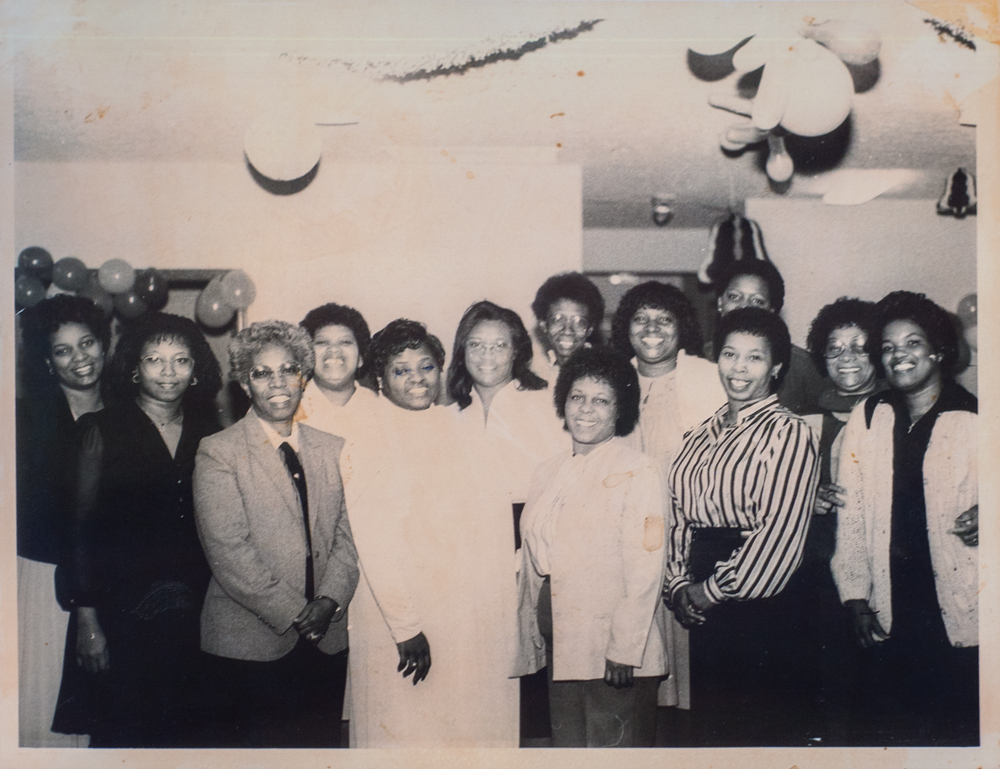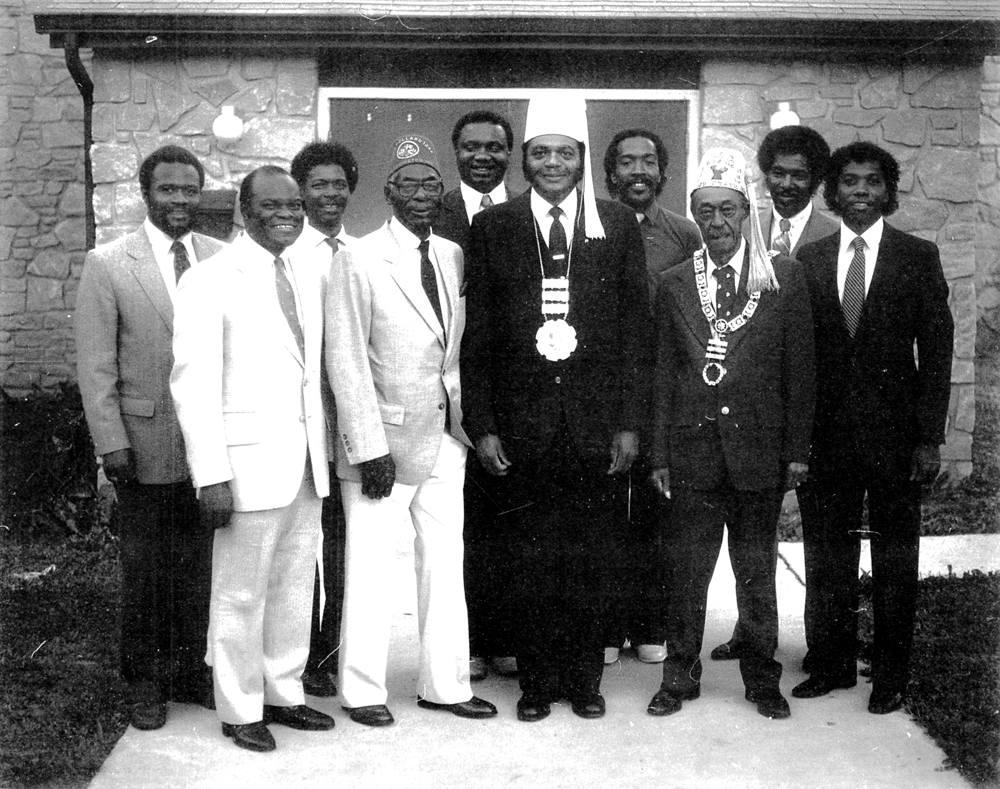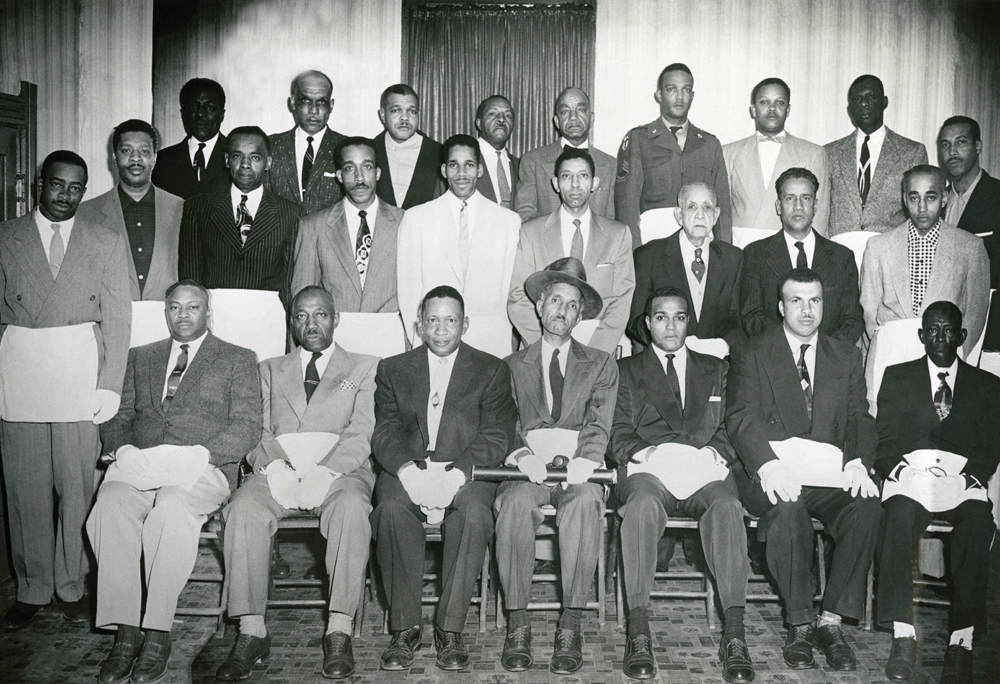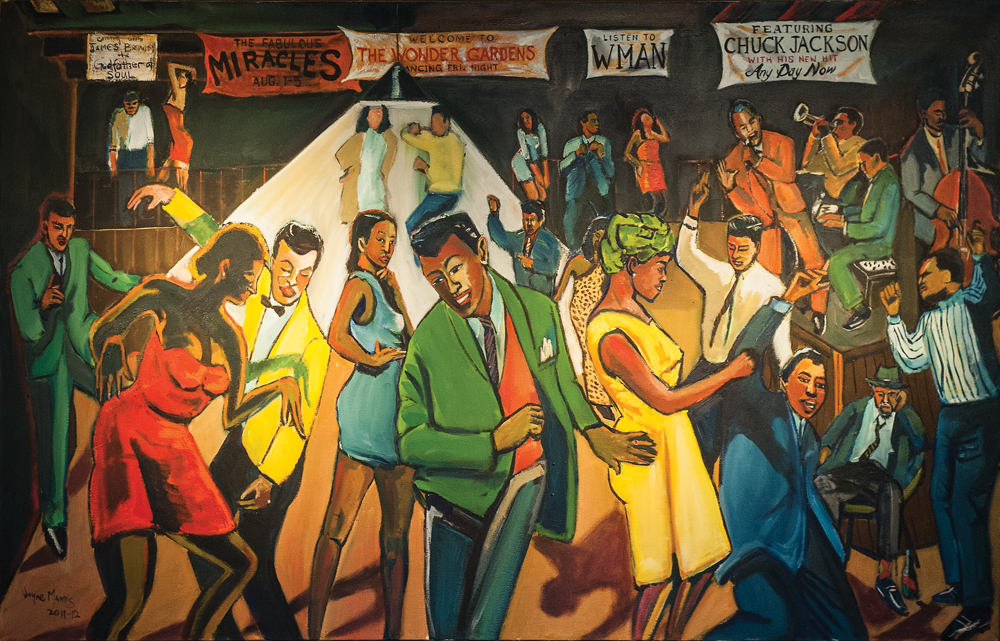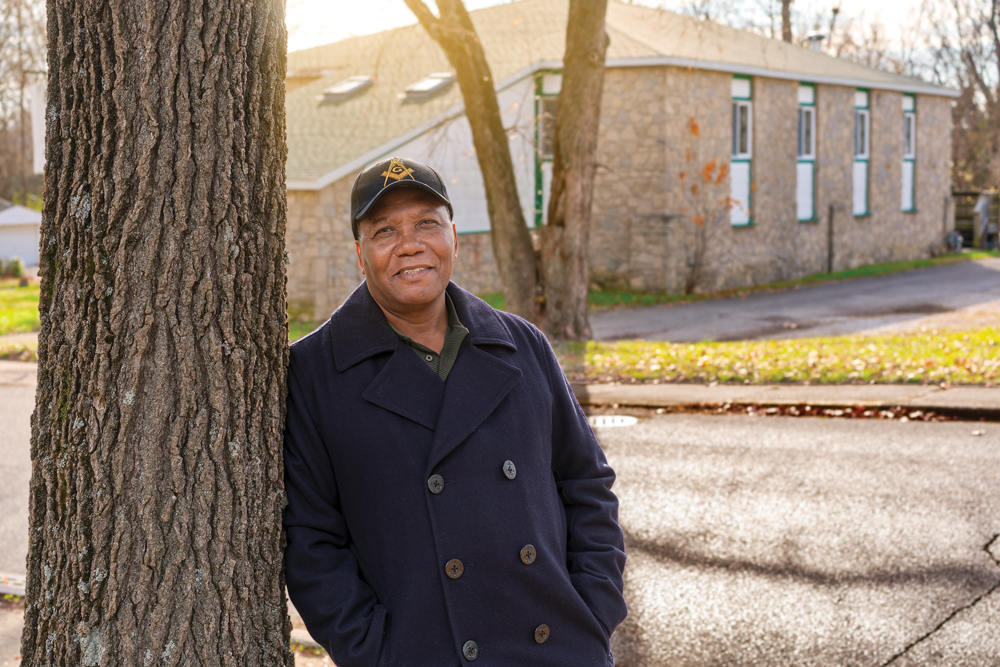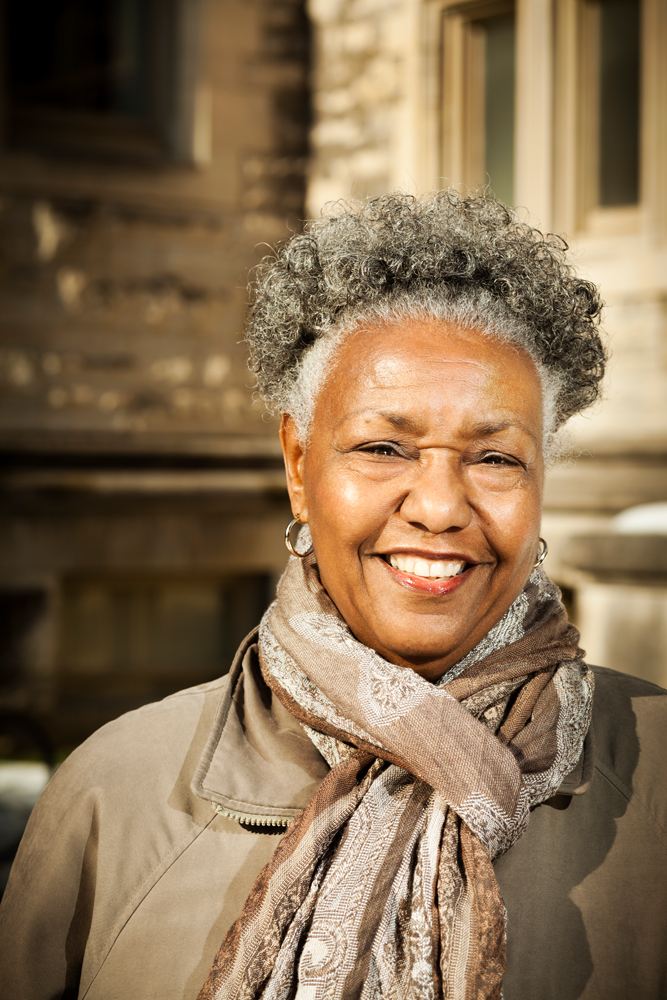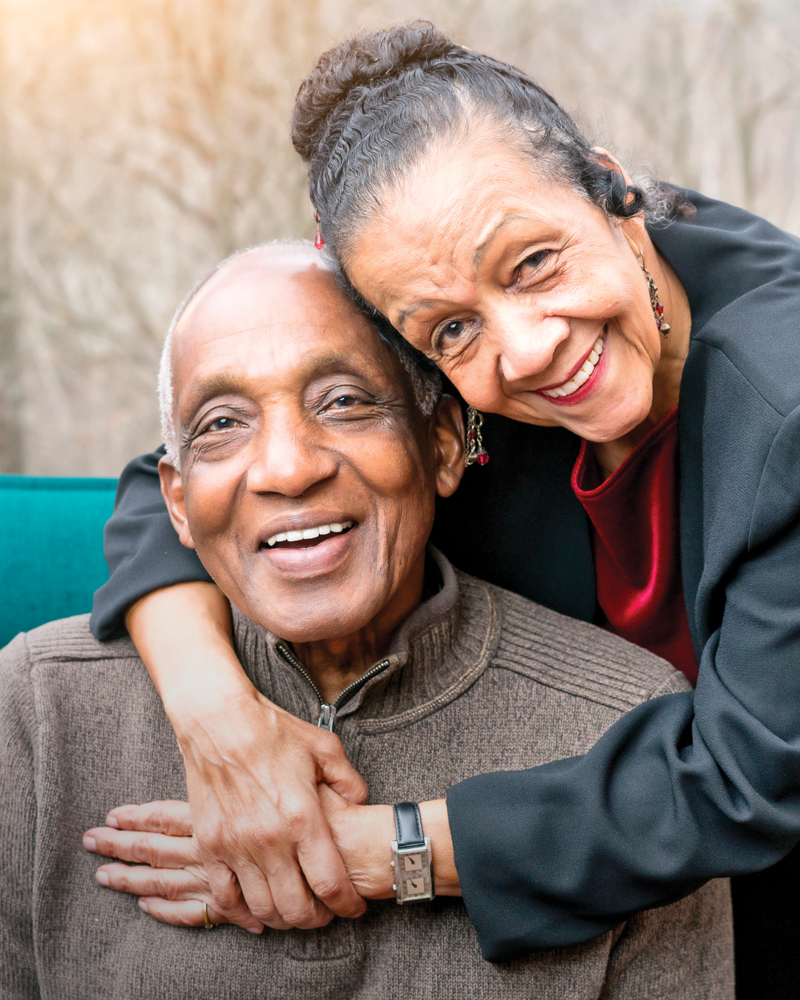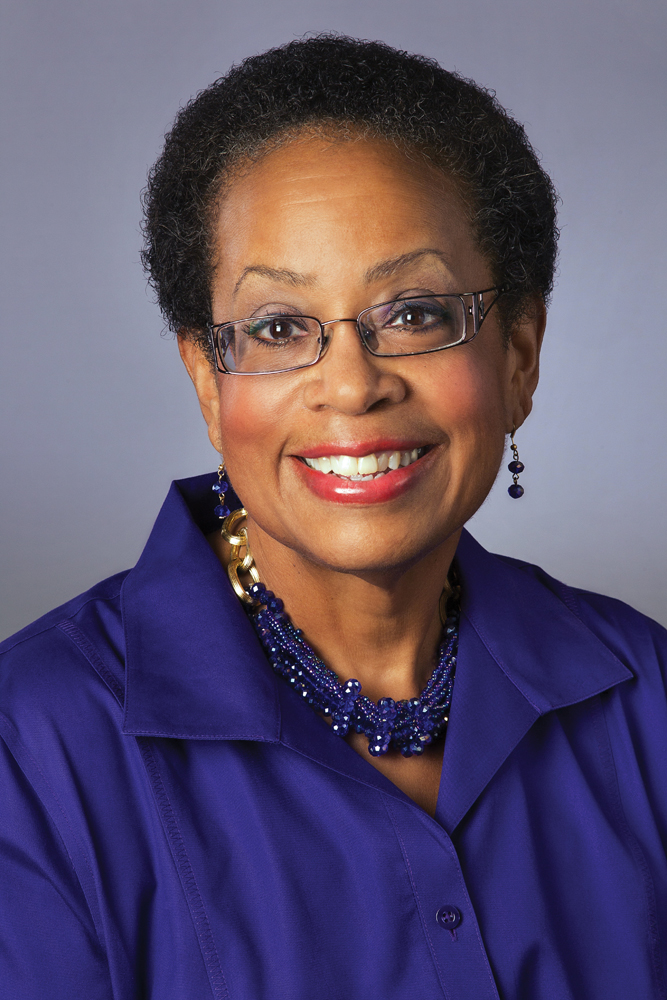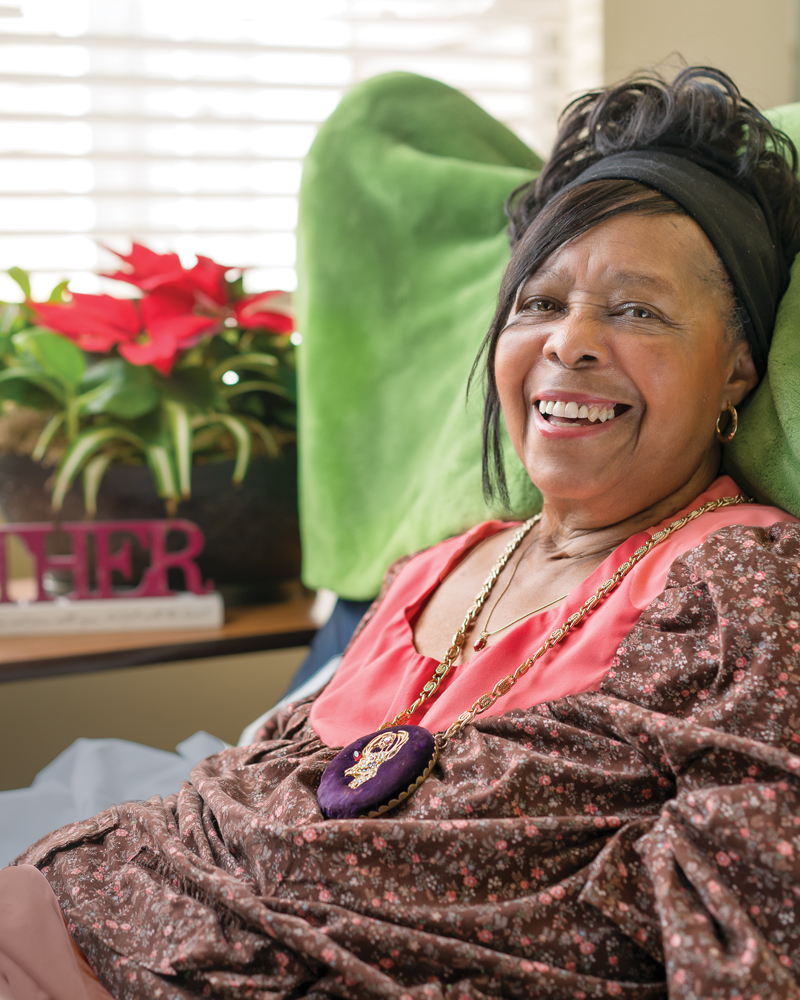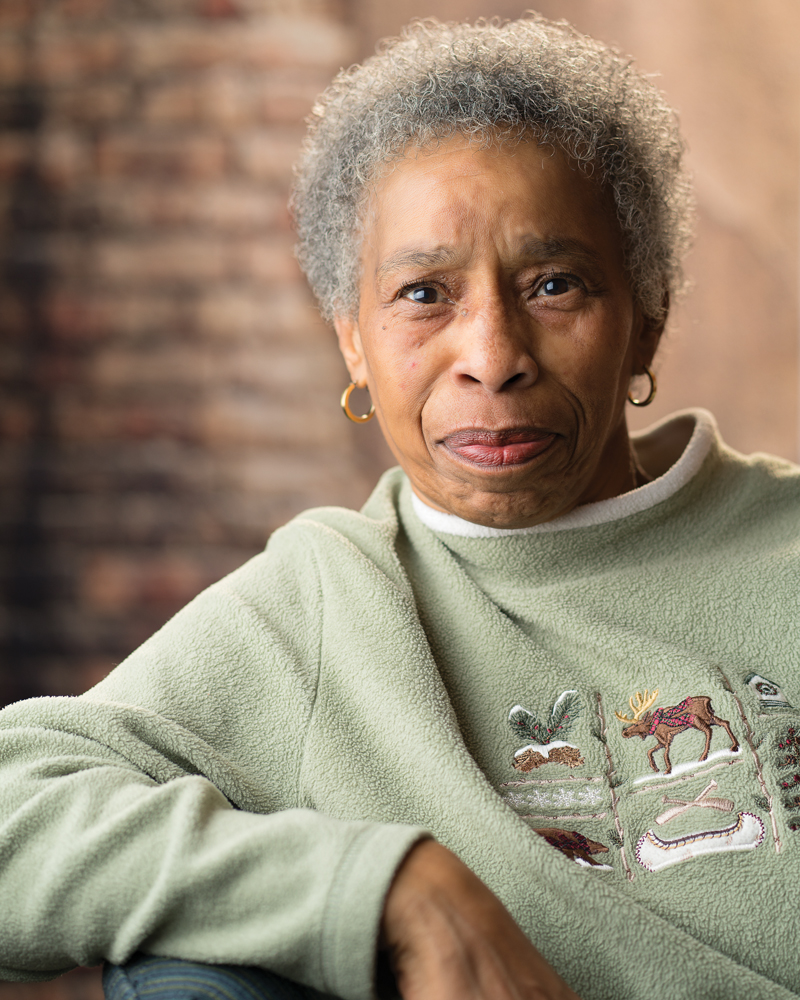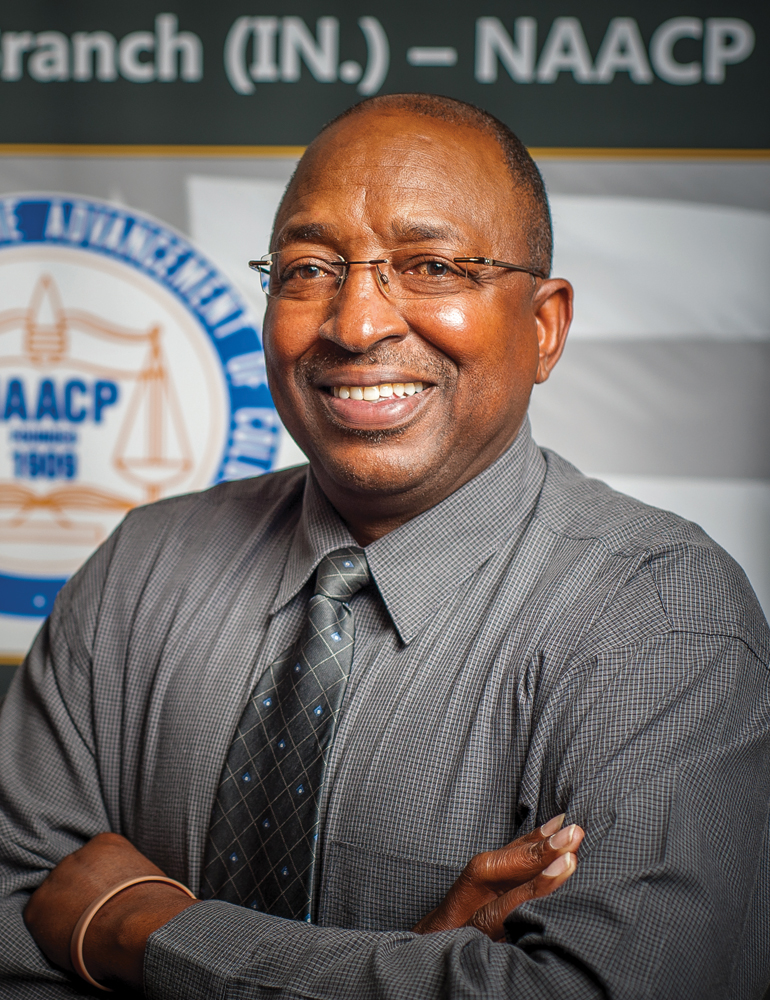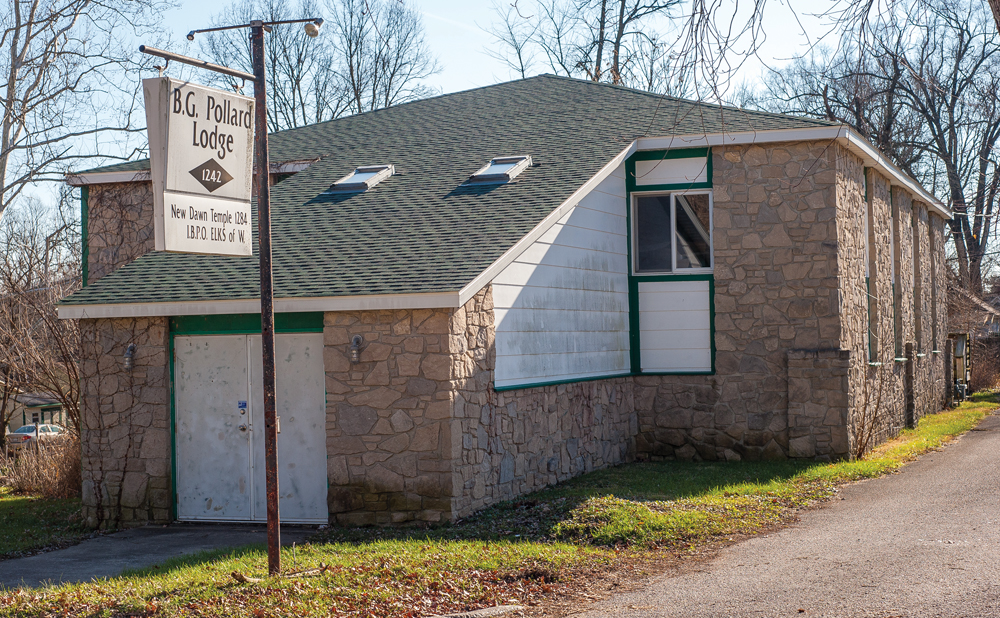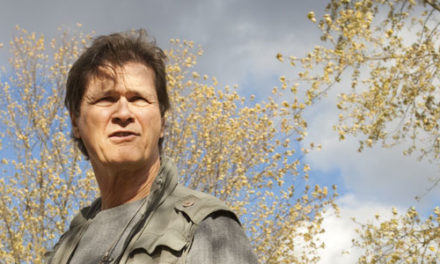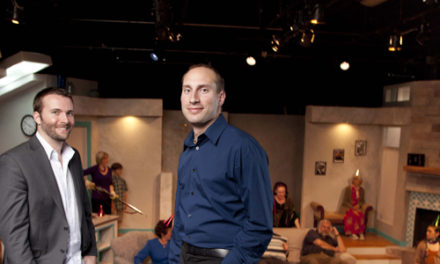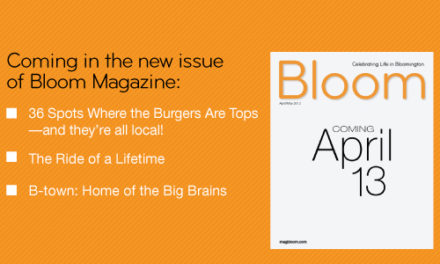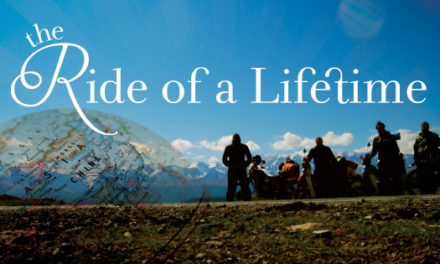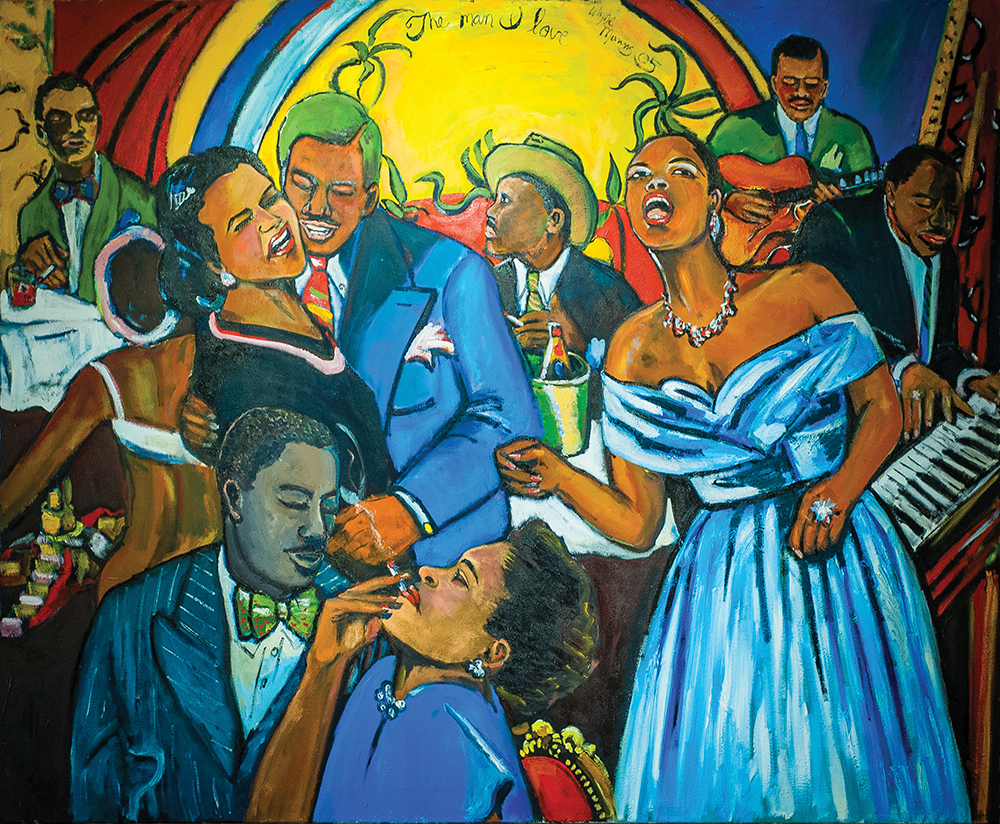
The way The Hole would have looked on New Year’s Eve or on another special occasion in the 1950s. There was frequently live entertainment at The Hole, especially on weekends. This painting by Wayne Manns can be seen at The Uptown Cafe, 102 E. Kirkwood, in downtown Bloomington.
For three decades, it was the place where members of Bloomington’s African American community could be themselves and have a good time. Then, it all came crashing down.
By Douglas Wissing
Photography by Martin Boling • Art by Wayne Manns
It’s a Saturday night at The Hole, the epicenter of jumping black life in Bloomington. Down the steps to the sprawling basement club, the dance floor is flashing rainbow colors, a spinning mirrored ball sending flickers of light onto the excited crowd—town and gown, old and young, black, white, and Asian—all dancing together. There’s a clack of billiard balls from the pool table where the local champions, Jimmy Ross and Fox, are holding the table. Couples flirt in the booths as latecomers work their way around the room. The mouth-watering smell of soul food wafts out of the small yellow kitchen. Singing bartenders Terry Ice and Zelma Norris are warbling to tunes on The Hole’s legendary jukebox—songs by The O’Jays, The Drifters, Atlantic Star, Luther Vandross, The Jackson 5. Over in the DJ booth, Thomas “Popcorn” Doyle is organizing his playlist.
TO READ THE FULL STORY, CLICK HERE
CHECK OUT THIS PHOTO GALLERY FROM “REMEMBERING THE HOLE.” (Click on the photo below to start the slideshow. Use the on-screen arrows or the arrows on your keyboard to navigate forward and backward.)


